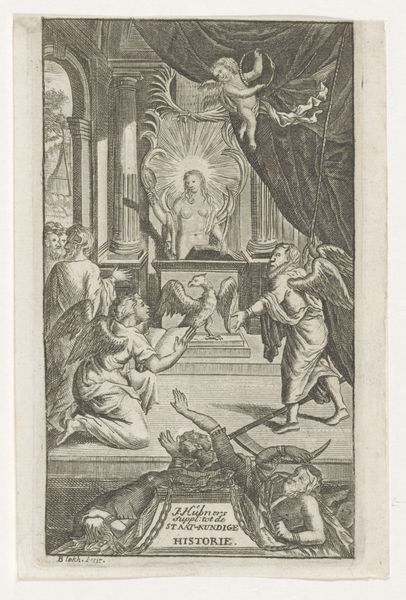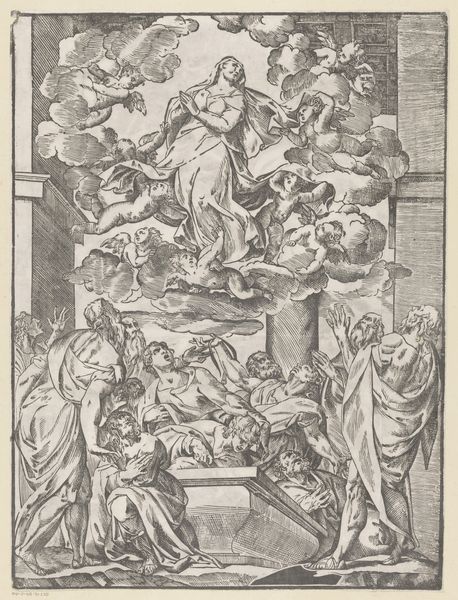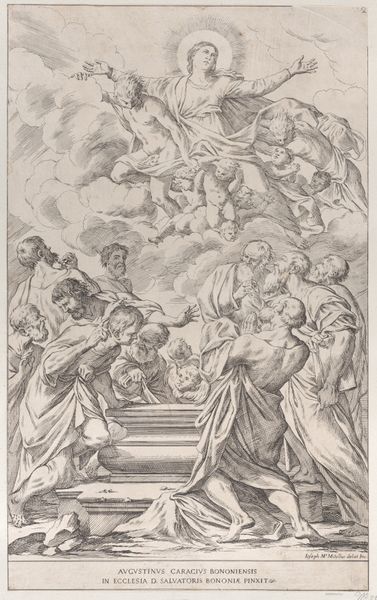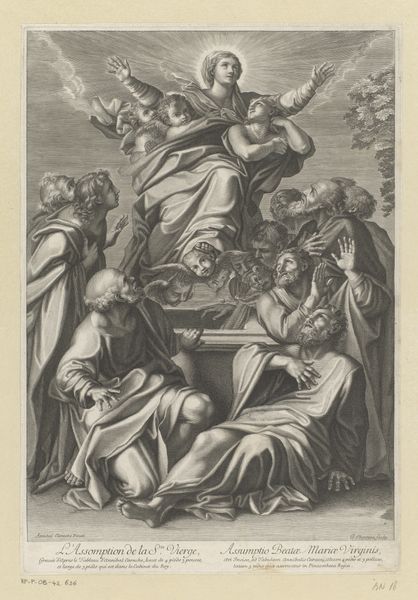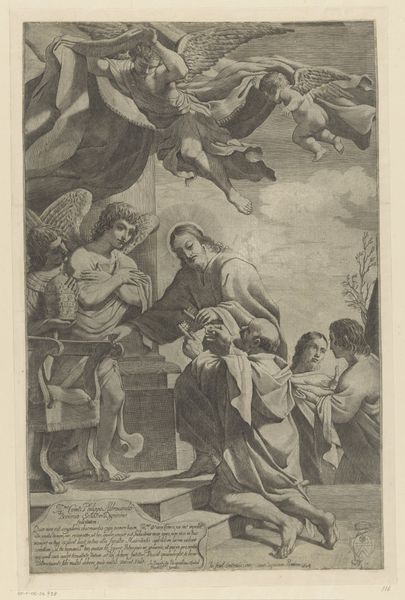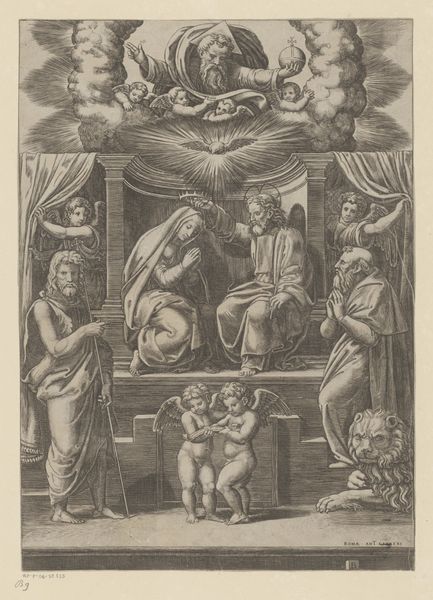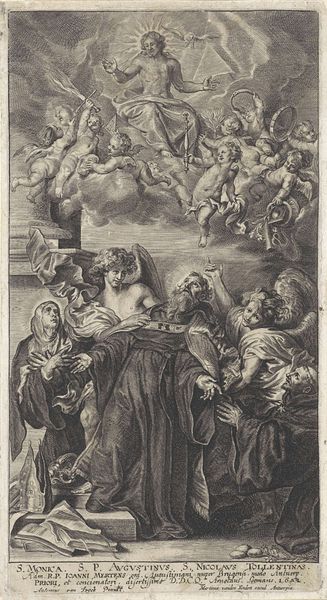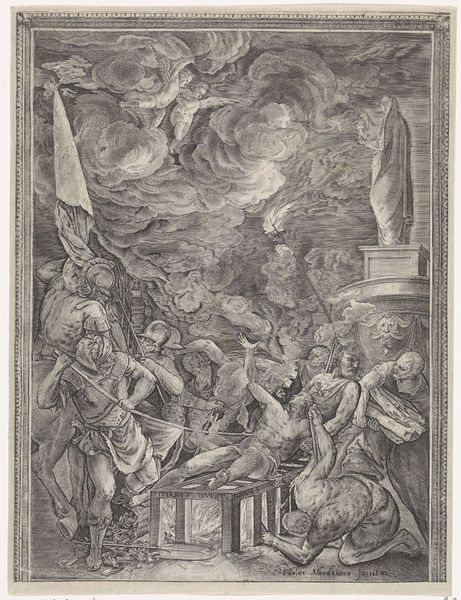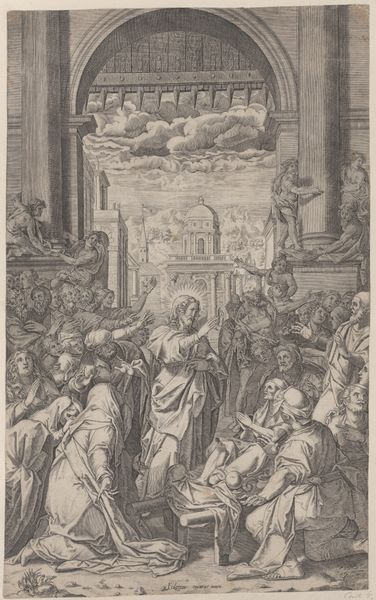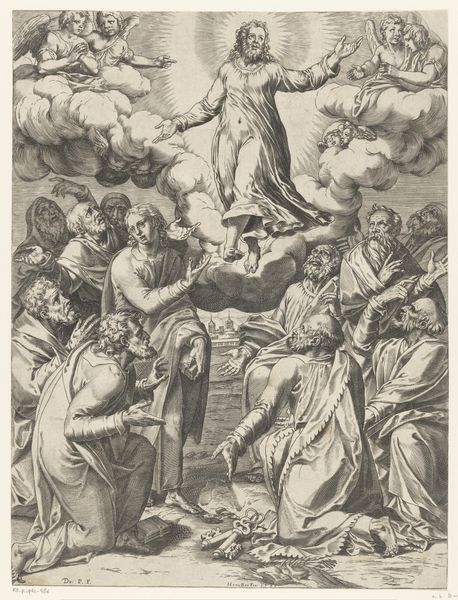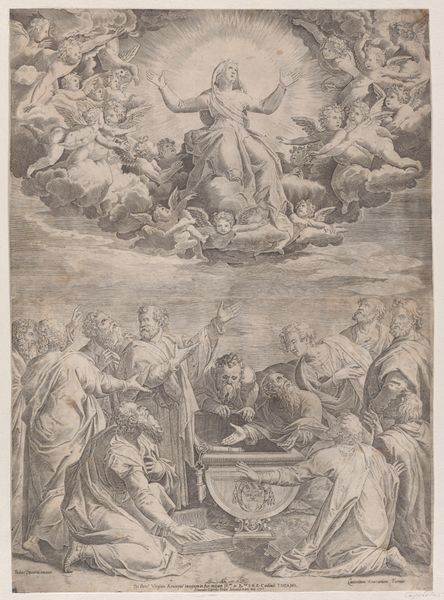
print, engraving
#
portrait
#
byzantine-art
#
allegory
# print
#
figuration
#
form
#
11_renaissance
#
line
#
history-painting
#
italian-renaissance
#
engraving
Dimensions: height 437 mm, width 319 mm
Copyright: Rijks Museum: Open Domain
Curator: Ah, this piece gives me goosebumps. It's got that old-world, slightly spooky vibe, don't you think? Like a ghost story illustrated in lines and shadows. Editor: We are looking at "The Assumption of Mary," an engraving by Benedetto di Stefani, dating roughly from 1570 to 1580. Notice the pronounced use of line—how it defines the figures and conveys texture and depth. Curator: Line is an understatement! Look at all those teeny, tiny strokes creating this incredible texture! Mary floating up there with cherubs galore, while below, these earthbound figures look utterly flabbergasted, they remind me of actors in a silent movie—so much emotion crammed into their faces. What does that do, formally speaking? Editor: Well, the upward visual trajectory emphasizes the theme of ascension—the earthly figures below grounded and gazing up at the celestial realm. The chiaroscuro—the play of light and dark—lends the scene dramatic intensity, enhancing the spiritual significance. Di Stefani is deploying well-established tropes. Curator: Maybe, but there is something oddly affecting here. Mary and her baby on a puffy cloud really softens the piece, even if the crowd is quite…baffled by what is happening! There is just this striking contrast. Makes me think about hope blooming in a moment of confusion and disbelief. Isn't it crazy how this piece, though quite literally "black and white" in execution, evokes something very poignant for the viewer? Editor: Absolutely. It showcases a controlled and calculated application of Renaissance art's key ideas: harmony, balance, and perspective. You feel it as if you understand this historical period's cultural emphasis on the divine and human connections. The Renaissance's humanist approach to religious subjects allowed artists to explore emotion within the set stylistic parameters, it adds another element here, don’t you agree? Curator: Oh, for sure! This is why those 'tropes' always strike a cord, and don't come off as simply formulaic; it takes talent to move a soul—or maybe even move a theological argument— centuries later with simple black lines. Editor: A lovely, emotionally informed way of considering this detailed work, certainly a far cry from mere formality!
Comments
No comments
Be the first to comment and join the conversation on the ultimate creative platform.
